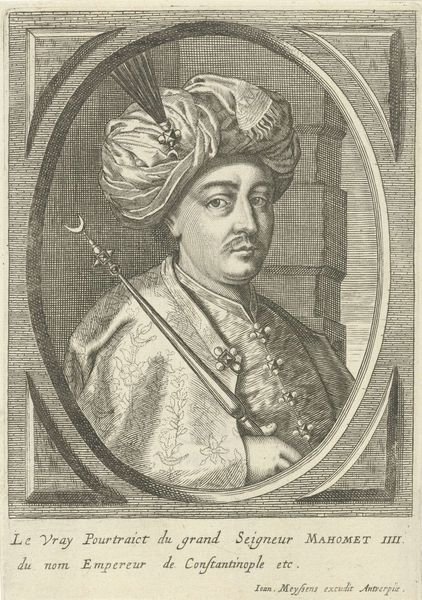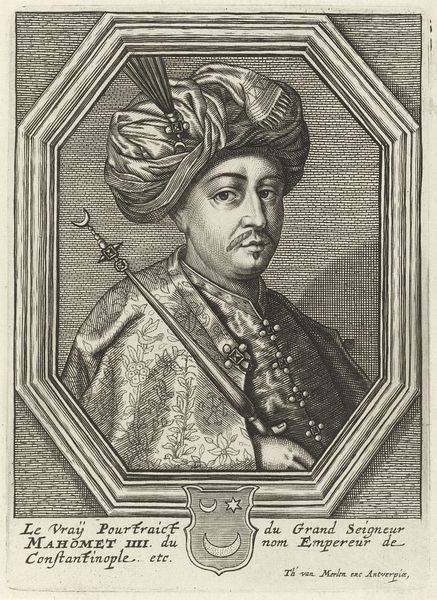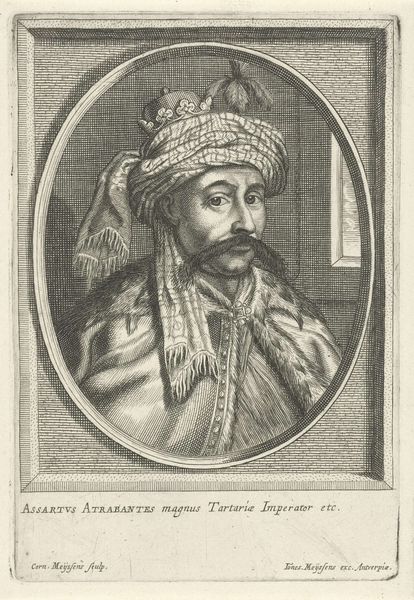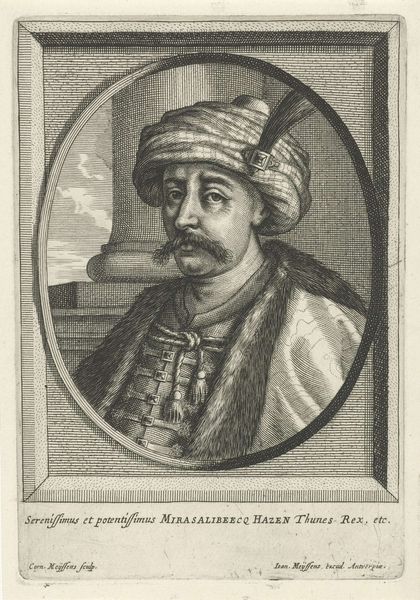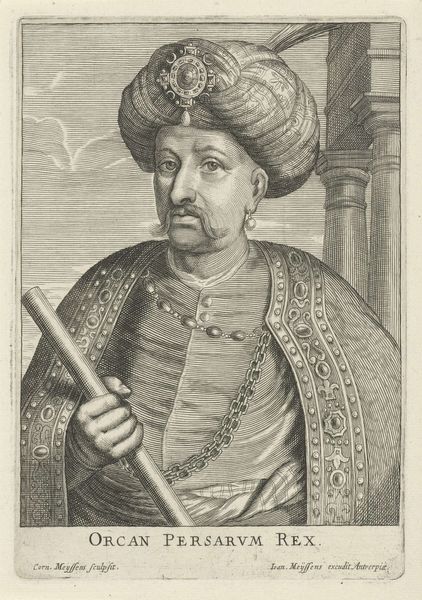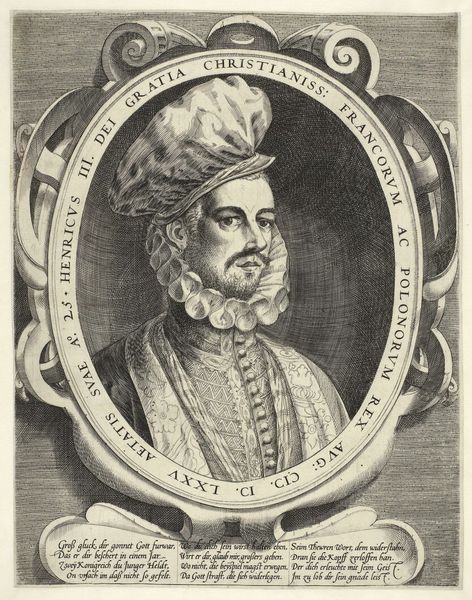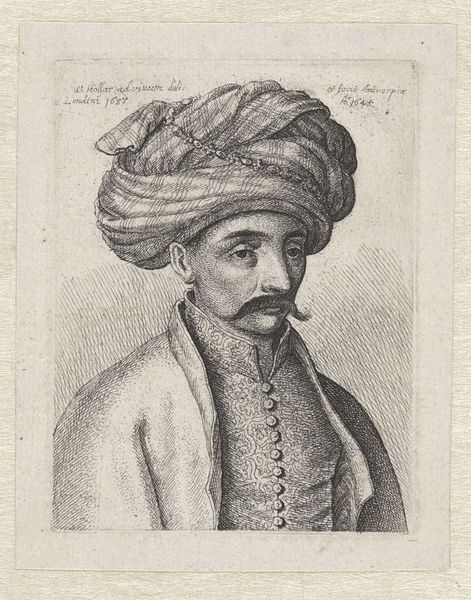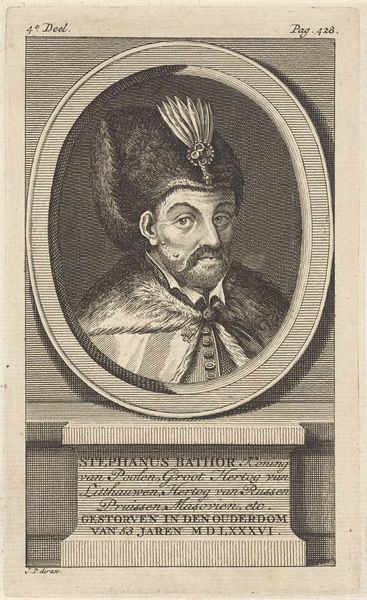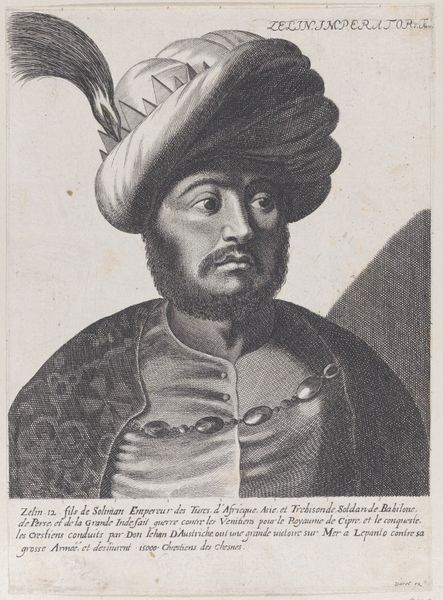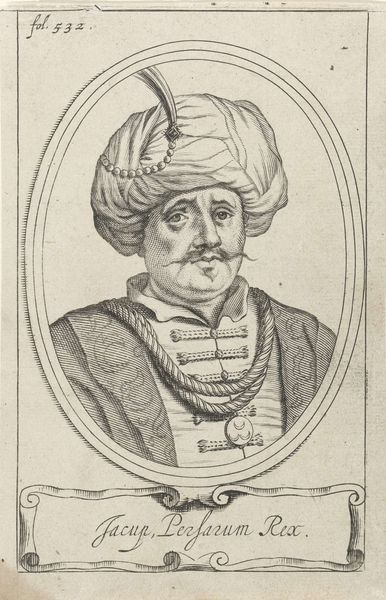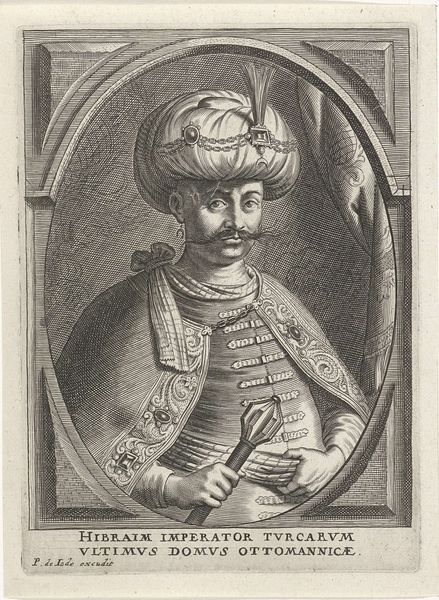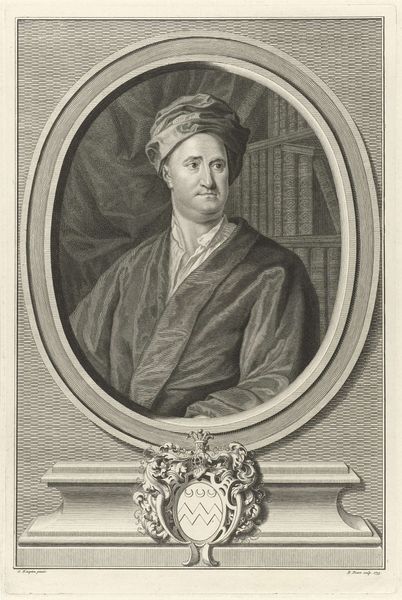
print, engraving
#
portrait
#
aged paper
#
baroque
# print
#
old engraving style
#
traditional media
#
islamic-art
#
history-painting
#
engraving
Dimensions: height 173 mm, width 121 mm
Copyright: Rijks Museum: Open Domain
Curator: Here at the Rijksmuseum, we have a fascinating print from sometime between 1650 and 1693 by Cornelis Meyssens titled "Portret van sultan Mehmet IV van het Ottomaanse Rijk"—Portrait of Sultan Mehmet IV of the Ottoman Empire. Editor: It has a solemn feel, almost theatrical, wouldn't you say? He's framed like a character on a stage, ready to deliver a very important speech. Curator: Absolutely. Prints like this served as vital visual communication. Think of it: How else would Europeans visualize a powerful, faraway ruler like Sultan Mehmet IV? Meyssens’ print provides a tangible image tied to political and religious tensions between Europe and the Ottoman Empire. Editor: You know, there is this wonderful play of textures that I really like. You have that slightly severe block of stone right next to what appears to be an immense turban that practically steals the show. Curator: Precisely! The turban itself signifies power and status. And that decorative staff he carries, topped with a crescent moon, is both elegant and indicative of his religious authority. It’s very strategic—all visual elements emphasizing his authority. Editor: It is that slight asymmetry in his features that makes the portrait compelling to me. And while it's technically intricate as an engraving, I love how it hints at a softer side, like you might catch him sharing a joke. Maybe. Curator: And its success also depended on wider European appetite for depictions of the ‘exotic’ East, helping to reinforce and perpetuate, sometimes misinformed, impressions of the Ottoman world. The distribution and interpretation of such images in pamphlets and news sheets became powerful. Editor: That’s such a helpful reminder that looking closely can give us real insight into how history unfolds. I always feel like with artwork like this, the longer I spend with it, the more it comes to life. Curator: Indeed. It prompts us to think critically about how these historical narratives get constructed through art and reminds us of the visual tools used to navigate cultural encounters.
Comments
No comments
Be the first to comment and join the conversation on the ultimate creative platform.
